Noctuidae Learn more about Noctuidae
-
How to identify Helicoverpa armigera and Helicoverpa armigera of Noctuidae? How to prevent and cure it?

Helicoverpa armigera and Helicoverpa armigera are two very similar insects, which are difficult to distinguish in production. They both belong to the family Lepidoptera, also known as Helicoverpa armigera and Spodoptera litura, widely distributed. So how to identify Helicoverpa armigera and Helicoverpa armigera? How to prevent and cure it? Cotton bolls in life
2020-11-09 How to identify Noctuidae Helicoverpa armigera tobacco green insect how to -
Control of buckwheat hook-wing moth
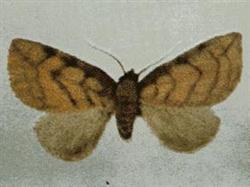
Buckwheat hook-wing moth belongs to Lepidoptera, Noctuidae, adults 10-13 mm long, wingspan 30-36 mm, forewings have 3 outward curved ">"-shaped yellow-brown lines. The length of the larvae is 20-30 mm. The young larvae are green or grayish brown. With the increase of the instar, the larvae gradually change to dark brown, and the mature larvae are dirty white. The insect is mainly.
2018-09-12 -
The difference between a butterfly and a moth

The difference between a butterfly and a moth
2018-07-03 -
Ganoderma lucidum tiger

The ground tiger belongs to Lepidoptera, Noctuidae. It is not only an important pest on agricultural and forestry crops, but also a common pest in the cultivation of edible fungi such as Ganoderma lucidum, Tremella fuciformis, fungus and Pleurotus ostreatus. It occurs more frequently in outdoor open field sunny bed cultivation and plastic greenhouse. The larvae feed on the hyphae of Ganoderma lucidum, inhibit the growth of hyphae, affect the formation of fruiting bodies, and decrease the yield and quality of Ganoderma lucidum. Morphological characteristics: adult body length 16-23 mm, wingspan 42-54 mm
2019-01-15 -
Chemical Control of Bombyx mori

Bombyx mori, also known as ground tiger, belongs to Lepidoptera Noctuidae, which mainly harms the seedlings of spring sowing vegetables and seriously damages eggplant fruits, melons, legumes and cruciferous vegetables. First, agricultural control in early spring to eradicate vegetable land and surrounding weeds, spring ploughing and raking, autumn soil drying and winter irrigation can kill eggs, larvae and some overwintering pupae. 2. Trapping and trapping (1) trapping and killing overwintering adults with sugar and vinegar solution in spring, the ratio of sugar, vinegar, wine and water is 3:4:
2019-01-16 -
Wheat stem gu e

Scientific name Lepidoptera, Noctuidae. Alias wheat borer, drillworm, stem borer and so on. Distributed in Shandong, Hebei, Jiangsu, Gansu and other winter wheat areas. Host wheat, barley, etc. The damage characteristics of the low instar larvae were in the heart leaves, and the jointing larvae of wheat and barley were harmful heart leaves, resulting in curling, dwarfing, withering or forming residual plants, and each larva harmed 3 plants. The larvae eat the first stem base and cause white ears. It is an important pest of wheat and barley in China. The morphological characteristics of the adult body length is 5.9-7.
2019-01-16 -
Occurrence regularity and control of sweet potato diamondback moth

Sweet potato diamondback moth Herseconvolvuli (Linnaeus) belongs to Lepidoptera, Noctuidae. It is distributed in Japan, as well as in Liaoning, Hebei, Henan, Shandong, Shanxi, Zhejiang, Taiwan, Guangdong and other provinces in China. It mainly harms the plants of Convolvulaceae, Solanaceae and Leguminosae. I. form
2020-11-08 Species sweet potato diamondback moth occurrence regularity and control -
Wheat moth

The scientific name Sitotrogacerealella (Olivier) belongs to Lepidoptera, Noctuidae. Distributed all over the country. Host wheat, corn, rice, sorghum, buckwheat, Gramineae weed seeds, edible fungi and so on. The damage characteristics of the larvae eat the above seeds. Morphological characteristics: adult 4-5mm long, wingspan 14-18mm, grayish yellow; compound eyes black, antennae filiform, grayish brown; head and face densely covered with grayish brown scaly hairs; lower lip whiskers grayish brown, second thick, third tip
2019-01-15 -
Common crop corn, tomato, cotton bollworm appear what medicine to hit? How?
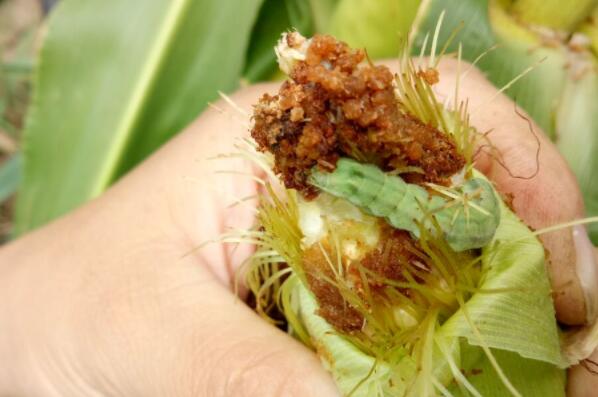
Corn, tomato and cotton are common crops, which are also prone to diseases during their growth, resulting in crop yield reduction and even death. So what's the poison if cotton bollworms show up? How? What is cotton bollworm? How to identify? 1. Cotton bollworm belongs to Lepidoptera and Noctuidae. It damages many crops
2019-04-10 -
Common corn insect pests and diseases

Common corn insect pests and diseases
2019-03-03 -
Maisui Ye

The scientific name Apameasordens (Hufnagel) belongs to Lepidoptera, Noctuidae. Alias wheat spike worm. Distributed in Inner Mongolia, Gansu, Qinghai and other provinces. Host wheat, barley, highland barley, wheatgrass, horse lotus grass and so on. The damage characteristics of the newly hatched larvae first feed on the flower organ and ovary of the ear, and individually feed on the tender surface of the inner wall of the glume, and then transfer to the damage. After the 3rd instar, the larvae latent in the grain, and after the 4th instar, the larvae transfer to the flag leaf to spin silk and connect the leaf margin to form a tube, and look for wheat ears to feed after sunset.
2019-01-15 -
Pest control of Plutella xylostella

Phoenix wood is known as one of the most colorful trees in the world. Its name comes from bright red or orange flowers with bright green pinnately compound leaves. It is often planted in Guangdong, Fujian, Sichuan and other places. Phoenix wood has fewer diseases and insect pests, but night moth pests are more common.
2018-07-16 -
How many generations of Helicoverpa armigera occur in a year? How to prevent and cure? What kind of potion do you use?

Helicoverpa armigera, Lepidoptera and Noctuidae are widely distributed in China and around the world, and occur in cotton and vegetable growing areas in China. Cotton bollworm (Helicoverpa armigera) is an important boring pest in cotton bud and boll stage, which mainly eats buds, flowers, bolls and tender leaves. The cotton bollworm happens in a year.
2020-11-09 Cotton bollworm Helicoverpa armigera one year several generations -
How to control cabbage armyworm
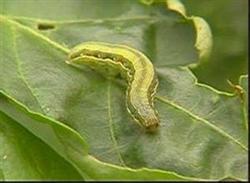
Cabbage armyworm (cabbagemoth) is alias cabbage night burglar, cabbage armyworm, Latin name: MamestrabrassicaeLinnaeus belongs to Lepidoptera, Noctuidae. Cabbage night moth has a variety of food habits. It is known that there are more than 100 species in 45 families. The main vegetables are cabbage, cauliflower, cabbage, radish, rape, eggplant fruits, beans,.
2018-09-12 -
What medicine does the common crop corn, tomato, cotton bollworm appear to hit? How to treat it?

Corn, tomato and cotton are all common crops, and they are also prone to diseases in their growth process, resulting in crop yield reduction and even death. So what kind of medicine should you take if the cotton bollworm appears? How to treat it? What is a cotton bollworm? How to identify it? 1. Cotton
2020-11-09 Common crops corn tomatoes cotton cotton bollworm appear -
Insect pests of carnation with cut flowers

The main results are as follows: (1) Red spider: generally, the high temperature above 25 ℃ (from July to August) is serious, and a small amount has occurred around the middle of April. Control methods: remove litter and weeds, improve cultivation conditions, appropriately increase air humidity, initial stage: spray 40% dicofol EC 1000 times 1500 times, or 40% dimethoate EC 1500 times, or 25% imidophos EC 1000 times, or fenvalerate 800 times, or fenvalerate 800 times, or carbendazine, nisolan, pyridazinone, carbendazim, mifenac, etc.
2019-01-16 -
How to treat tulip penicilliosis? Control measures of tulip penicillium

Tulip is not only a world-famous bulb flower, but also an excellent variety of cut flowers, with vigorous and straight flowers, elegant and beautiful leaves, dignified and lovely lotus-like flowers.
2018-10-15 -
Disease and pest control of broccoli

Disease and pest control of broccoli
2019-07-19 -
Peanut planting technology: what are the diseases in the later stage of peanut?
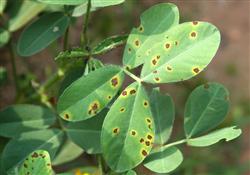
What are the diseases in the later stage of peanut? Please give guidance on the occurrence of leaf spot in peanut in the later stage, which is commonly known as brown spot and black spot, commonly known as black spot and black spot. The damaged leaves were characterized by the destruction of chlorophyll, resulting in early falling flowers and poor pods. Symptoms: Brown spot mainly occurs in leaves.
2018-07-18 -
How to strengthen the management of loquat in winter
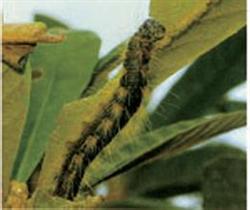
Loquat yellow caterpillar MelanographiaflexilineataHampson, also known as tumor moth, belongs to Lepidoptera, Noctuidae. It is distributed in Nanjing, Anhui, Jiangxi, Hubei, Sichuan, Taiwan, Hainan, Guangdong, Guangxi and other producing areas in China. In addition to harming loquat, it also harms Baige, jackfruit and other plants. The characteristics of the harm.
2018-09-11
